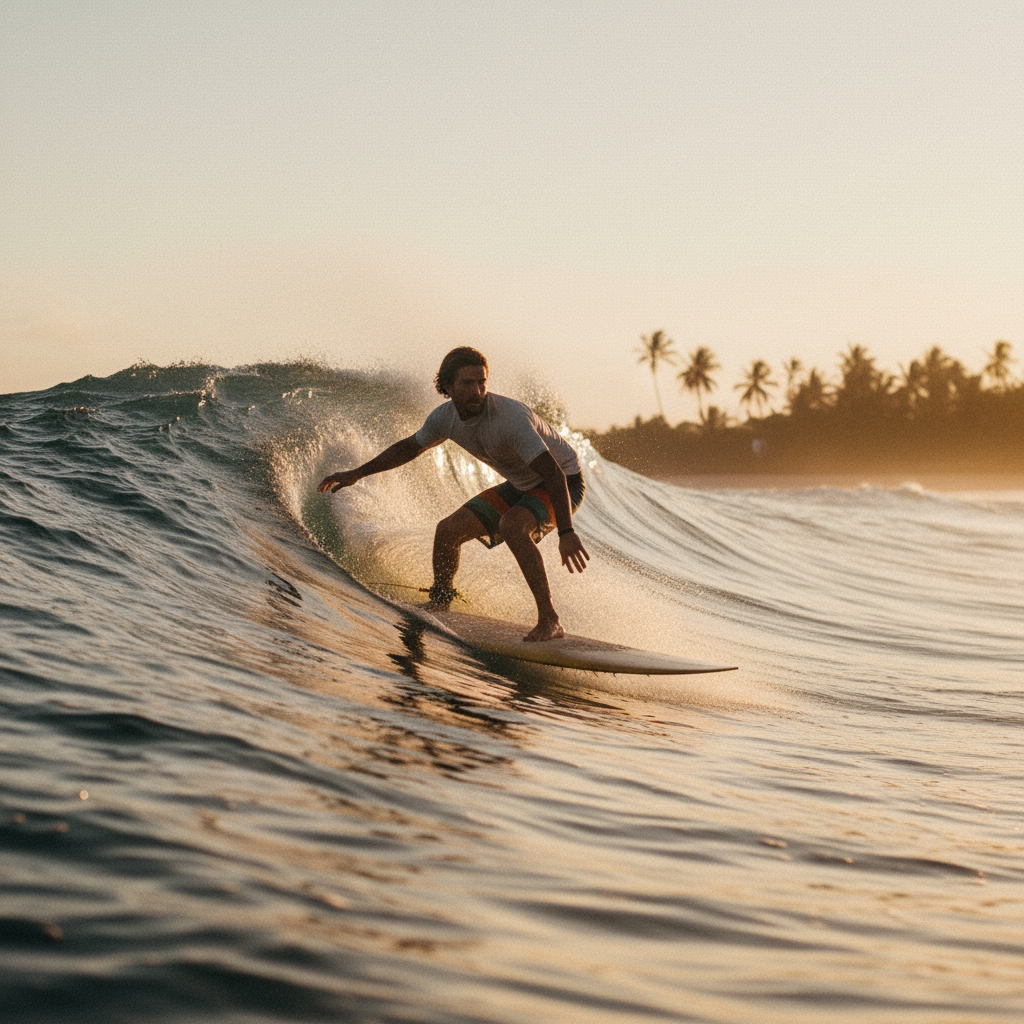It's 2 feet, mushy, and weak. You paddle out on your standard thruster, pump your legs off, and still bog down in the flat sections. It's frustrating. It's exhausting. And honestly, it's unnecessary.
If you're trying to rip small waves on the same board you use for good waves, you're making it harder on yourself. Enter the twin fin: the ultimate cheat code for small surf.
Why Twin Fins Work in Weak Waves
It comes down to simple physics: Drag.
A center fin creates drag. It stabilizes the board, sure, but it also acts as an anchor when you're trying to get moving. By removing that center fin, water flows through the tail of your board with zero resistance. The result? Instant, effortless speed.
In small waves, speed is everything. A twin fin lets you glide over flat sections that would sink a thruster. You don't have to pump frantically; you just stand there and the board goes.
The "Skatey" Feel
Twin fins are loose. Without that center fin to lock you in, the tail is free to slide and pivot. This gives the board a "skatey" feel, similar to a skateboard with loose trucks.
This looseness makes small waves fun again. You can turn on a dime, slide the tail, and generate speed out of nowhere. It turns a boring, close-out session into a playground.
Keel vs. Upright: Which Twin is For You?
Not all twins are the same. There are two main families:
1. The Keel Fin (Retro Style)
Low, long, and wide. Keel fins have a massive amount of surface area. They provide incredible drive and down-the-line speed. They feel stable and smooth. Perfect for drawing long lines and cruising.
2. The Upright Twin (Performance Style)
Taller and narrower, like a standard side fin but bigger. These feel much more like a modern thruster but faster. They pivot quickly and allow for vertical surfing. If you want to snap and slash, go upright.
Tips for Transitioning
Switching from a thruster to a twin takes a session or two to get used to:
- Don't trust the tail blindly: On a thruster, you can push hard on the tail and it will hold. On a twin, if you push too hard too late, you might slide out.
- Flow, don't force: Twin fins reward a smoother, rail-to-rail style. Let the board do the work.
- Move your feet: You might need to adjust your back foot placement slightly to find the sweet spot.
Stop Bogging Down
Summer is coming (or maybe it's just a bad run of swell). Don't let small waves ruin your stoke. Grab a twin fin, loosen up, and realize that even 2-foot slop can be the best session of the week.
Not sure which twin fin model fits your board and weight? FinFinder.ai can match you with the perfect set to unlock your small wave potential.
Helpful Resources
Ready to Find Your Perfect Fins?
Use our expert fin recommender tool to get personalized suggestions based on your needs.
Try Fin Recommender


